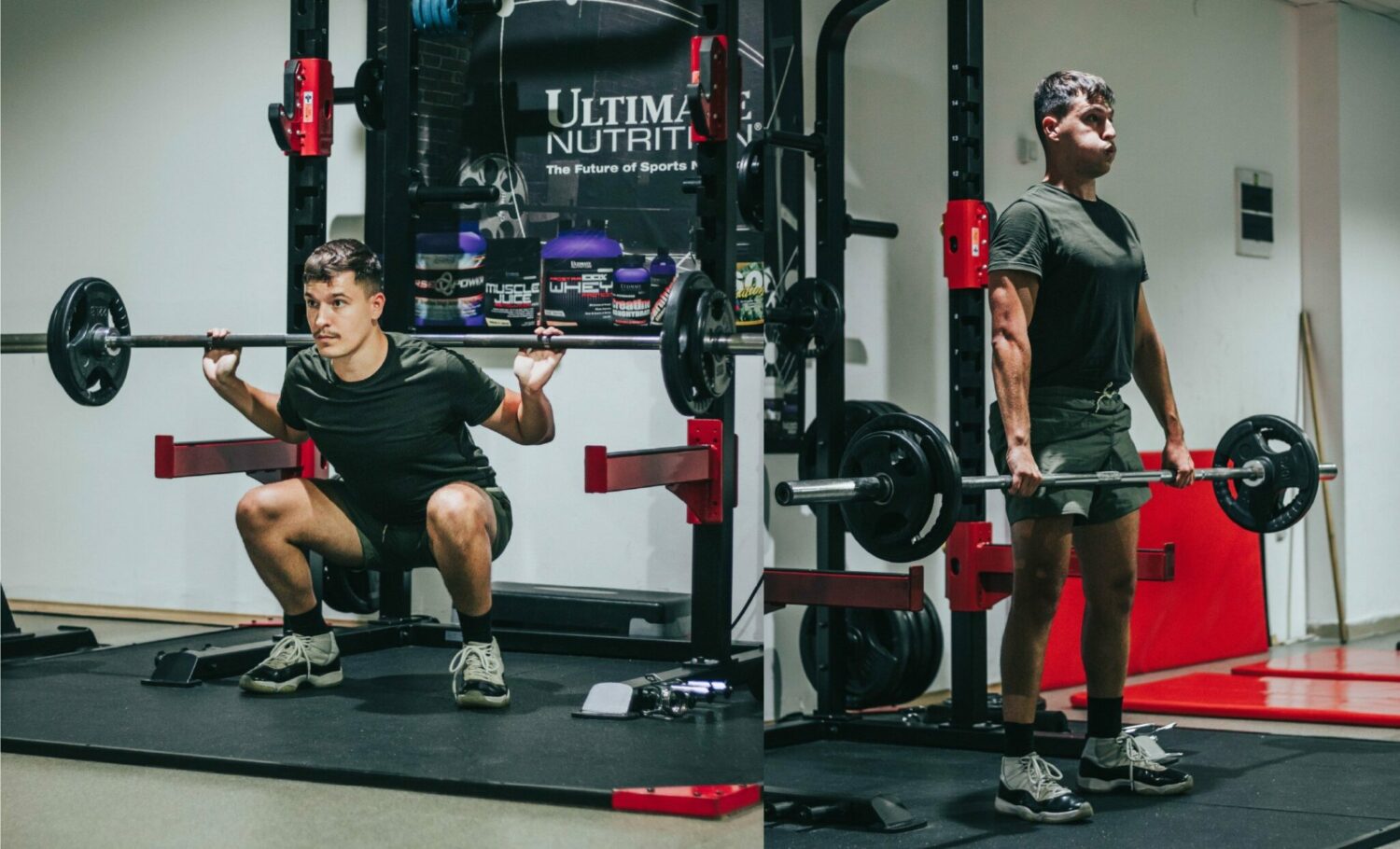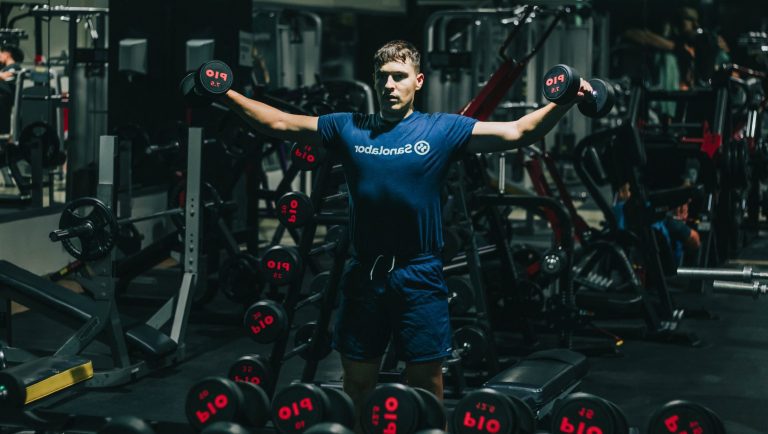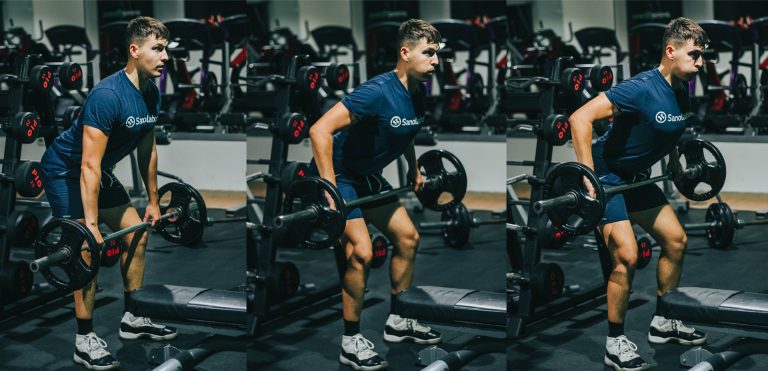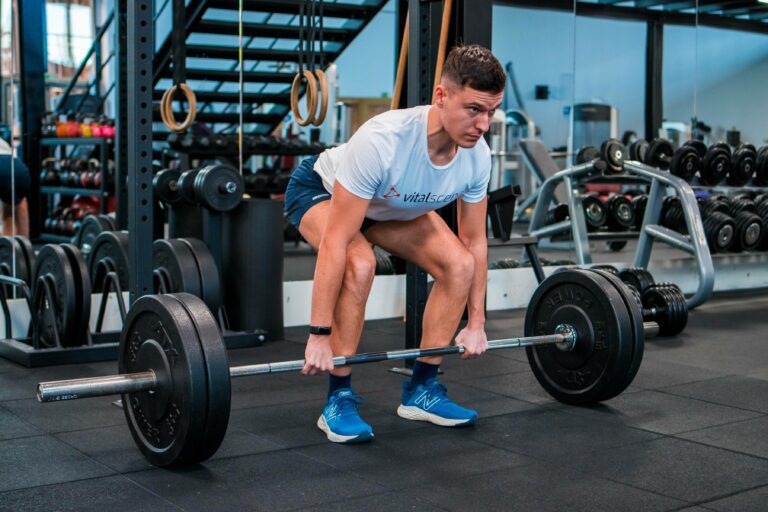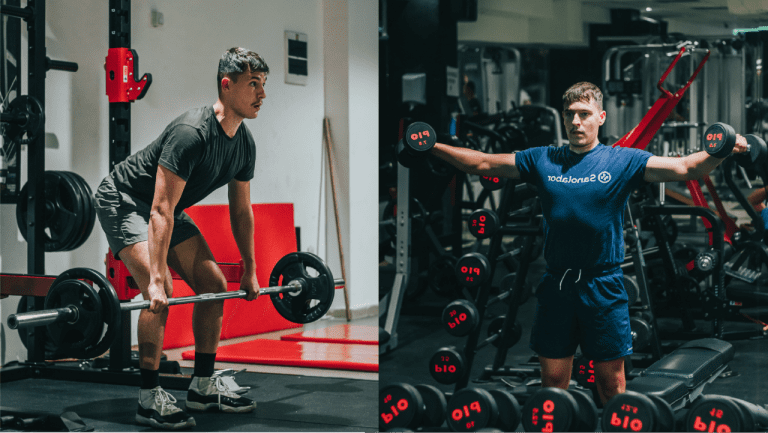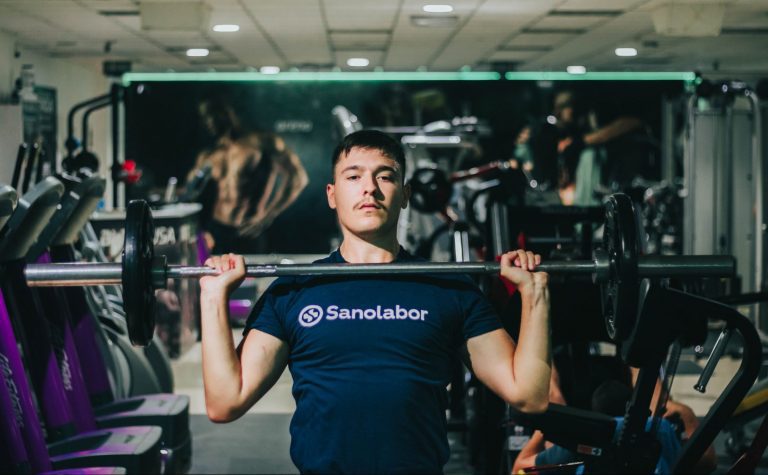Hypertrophy vs Strength Training: Exercises, Volume, and Frequency
Training with weights can increase muscle mass and make you stronger, that is for sure. However, there is a great distinction between having more muscle and being stronger. Hypertrophy vs strength training, who wins? For amateur lifters that do not understand the difference, this educational piece of content will come in handy.
What Shapes Your Physique?
When you see someone walking in with a great physique, you can already tell that they are physically active, they work out a lot. Although diet, sleep, and genetics play a major role in how our body looks, strength training is vital for any transformation.
Individual Response
Everyone has a different body, metabolism, and hormonal response to specific training or a diet. This is why no two people will look the same with the same diet and training structure. On top of this, people have different goals, different work lives, and sleep quality. This is why workouts need to be highly individualized for the most efficient results.
Bigger or Stronger?
When you’re starting, you probably won’t differentiate between strength and size that much. Most amateurs think the bigger the muscle, the more they can lift. And while there is some truth in that, for example, a guy with large, defined, and shredded muscles can definitely lift more than the average man, there’s still is a strict difference between strength and size.
Hypertrophy
The optimal muscle mass training protocol will prioritize hypertrophy. Hypertrophy means muscle growth. The muscles can increase through hyperplasia or hypertrophy. The first one is increased numbers of muscle fibers, the latter is an increase of the muscle fibers in size. By properly structuring your training, you can tone your muscles and increase muscle size, mainly under the “hypertrophy” mechanism.
Hypertrophy training needs to exert mechanical tension, muscle damage, and metabolic stress. The three most important mechanisms of muscle growth. (1) (2)
How the Muscle Grows
In order to build muscle, you need to push against resistance. By doing so, the muscle fibers working so hard are injured. These micro-injuries or micro-tears cause inflammation, which increases intramuscular pressure. After a sufficient rest and recovery period, with enough protein and sleep the muscle will repair and become bigger and stronger.
Training for Muscle Mass
Training for muscle mass is Muscle-Dominant. The most efficient way to grow muscle mass is to put the muscle first and the weight second. This means you are primarily focused on muscle contractions, proper lifting, and muscle engagement, rather than lifting more weight. Sometimes when the muscle is tired, you’d rather have a lower load and indulge the muscle in isolation exercises for longer, as long as you feel the burn.
Volume and Frequency
For these anatomical changes to take place, we need a higher volume. High volume is the key to muscle growth. This means frequent training for 5-6 days per week, with a relatively high number of reps, sets, and exercises. Since each muscle group needs enough (48h) rest, it is best to split your workouts. You can train the chest, shoulder, and triceps (push) on Monday and Thursday, do your upper/lower back and rear shoulders with core (pull) on Tuesday and Friday and work on your quads, glutes, calves, and hamstrings (legs) Wednesday and Saturday.
Type of Contractions
Training for size is a muscle-dominant focus, which means the key is to consciously focus on engaging/activating the specific muscle group that is trained for. Instead of finding the most efficient way to push the weight, we should do our reps in a controlled manner. The best tempo is 2/2 or 3/2 seconds of concentric to eccentric contraction.
Load, Reps, and Sets
The best range of load per exercise is 65%-85% RM (of Maximum Repetition). This means if your 1 Rep Max on Squat is 120kg, you will go for between 78-102kg. We pick such load so we are able to do the needed reps, which are 8-12 per exercise. Sets should be around 3-5, so we can fatigue the muscle. Generally, the best practice is to start with 3-4 compound exercises and when the key muscles are tired, perform some isolation exercises with a slightly lower load.
Rest and Recovery
The key factor aside from volume is the rest period. Rest in between sets should be around 1 to 1.5 minutes, no more than two minutes. For efficient hypertrophy, we need to fatigue the muscle, lactic acid needs to build up to increase intramuscular pressure.
For the Recovery part though, building muscle is impossible without the proper fuel. Nutrition, sleep, and supplementation can greatly affect muscle growth. You need a good amount of healthy fats, carbohydrates, and high-quality protein. Sleeping is where most of the anabolic effects of growth take place, so 8+ hours of sleep in a dark, cold room can be quite beneficial.
Note
Protein should be kept at 1.6-2.2 grams per kg of body weight. Nightly casein, simple carbs after a workout, and frequent meals are some of the tricks that can help your body to keep protein synthesis at a higher level.
Compound vs Isolation
When training to grow in muscle size, the ratio of compound to Isolation should be around 50/50. While lifting for strength or power will include mostly compound or full-body exercises, working for muscle growth requires tearing the muscle down more, and the most efficient way for this is isolation.
But because compound weightlifting offers so many benefits, increases overall testosterone, speeds up metabolism and fat loss, increases full-body strength, and many more, it is the best way to start the practice. So starting each workout with compound exercises would be great, until the muscles become tired, you can switch to isolation.
Muscle Building Workout Protocol:
Dosing: 5-7 exercises, 3 Sets, 8-10 Reps, 65-85% RM, Rest 90 sec.
| Monday | (Push) Bench Press, Overhead Press, Triceps Extensions, Biceps Curls, Chest Flyes, and Dumbbell Lateral Raise |
| Tuesday | (Pull) Weighted Pull-up, Bent Over Row, Lat Pull-Down, T-Bar Row, Rack Pulls |
| Wednesday | (Legs) Squats, Romanian Deadlift, Hip Thrust, Kettlebell Lunges, Calf-Raise, and Leg Extensions |
| Thursday | (Push) Bench Press, Overhead Press, Close Grip Push-ups, Triceps Kickbacks RL, Arnold Press, Weighted Dips, and Cable Flyes |
| Friday | (Pull) Weighted Pull-up, Bent Over Row, Romanian Deadlift, Straight Arm Pulldown, Face Pulls, and Close-Grip Lat Pulldown |
| Saturday | (Legs) Squats, Bose Ball Bridges, Hip Thrusters, Leg Extension, Hamstring Curls, Standing Hip Extension, Calf Raises, and Kettlebell RL Lunge |
| Sunday | Rest & Recovery |
conclusion
Hypertrophy training is primarily focused on growing the muscle. The end goal is an increase in muscle mass. Hypertrophy training involves both compound and isolation exercises. For optimal growth, aim for higher volume, the higher frequency at 65-85% of RM. Reps are at 8-12, sets 3-5, exercises 5-10. Also, keep rest time low (60-90 sec) as the primary goal is to tear the muscle down.
There are three core principles to building muscle. First is training, and the most practical one is the hypertrophy method, which aims for a high volume of 4-6 workouts per week, 6-12 exercises per workout, 3-5 sets of 8-12 reps with a load of 65-85% RM. Slow, eccentric, and controlled lifts, with minimal rest of 45-60 seconds in between. The other two factors are a high-protein diet (especially Leucine, BCAA & Glutamine) and optimal sleep/regeneration.
Should I train to failure for hypertrophy?
Training to failure is an effective method for hypertrophy. The basic idea relies on the fact that muscle contractions tear up smaller muscle fibers and cause microtears, which is the main stimulus for regeneration. Training to failure will ensure this happens, and also increase lactic acid build-up. This causes inflammation, after which with sufficient protein, rest and regeneration the body is building more and stronger muscle fibers.
How long does it take to see muscle growth?
Although the effects of weightlifting will acutely result in visible muscle increase, this isn’t really building muscle. At the end of each weightlifting session it is normal that we look more muscular than at its start. This is caused by increased circulation and water-pulling effect of creatine. In reality, we need around 3 months to significantly build muscle. Shorter periods of training will mainly aid in water-retention and won’t build real muscle, resulting in easier visible muscle loss after quitting weightlifting training.
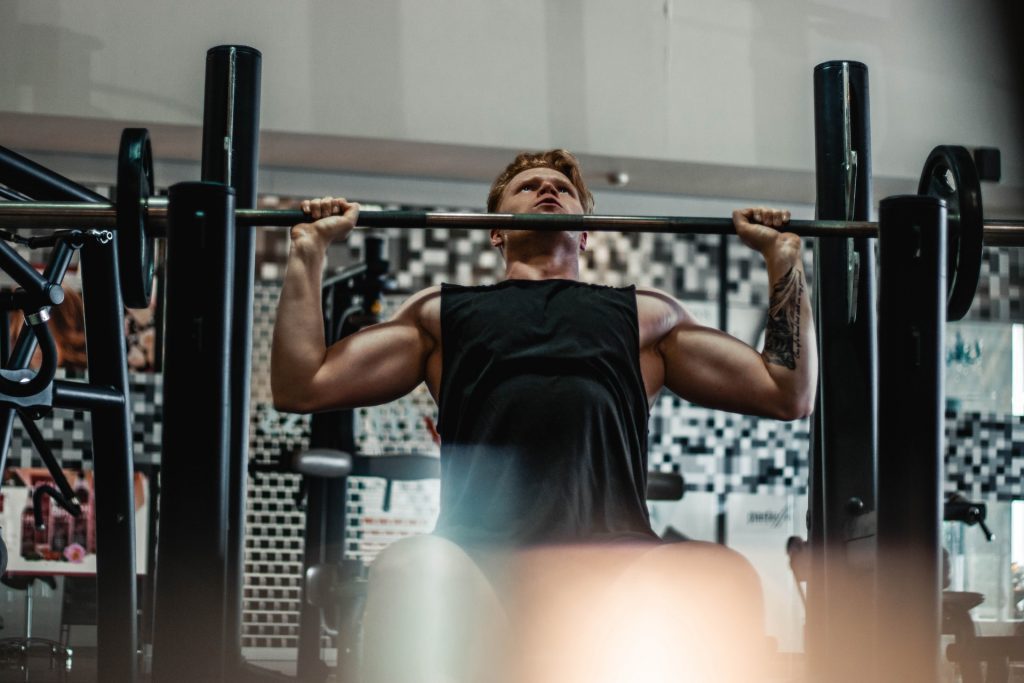
Strength
Although strength is confused with muscle growth, it is a completely different animal. Strength is the ability to exert maximal force output to external resistance. It is the ability to lift the weight from A to B, independent of time. In strength, we indulge our whole body, and recruit as many muscle fibers and larger motor units at once. We are set in the best possible position, to lift the weight as efficiently as possible. In other words, the weight is the goal, not the muscle-fatiguing.
Check Out: Training For Strength: 9 Ways To Increase Your Lifts
Strength and Neural Adaptation
Strength is an ability, hypertrophy is anatomical change. While improving your muscle size can at the same time improve strength and the other way around, strength relies on different mechanisms. Training to become stronger predominantly trains the nervous system. The adaptations are shorter-gained and shorter-lived. The adaptations are heavily neural, not that anatomical in nature.
Strength Training Metrics
Strength is trained in a more maximal, than submaximal way. The main goal is to increase the amount of load we can lift in a given exercise. For this to occur we need to train the nervous system to fire up and use our muscles to lift the weight. To do so, we need lower volume, lower frequency but higher load, and longer rest. In other words, we lift heavier, for fewer reps, and recover more in between sets.
Volume and Frequency
To become stronger, you need to increase the intensity. This means higher loads and more explosive lifts. For this to be possible, your body needs to rest and recover more. This is why the volume of strength training is lower, along with its frequency. 2-4 workouts a week are enough to build a stronger body. Since you mostly work on strength with compound movements, you also have fewer exercises and you can target more muscles. For the volume, you also do fewer reps (1-3-5) and sets (2-5)
Load, Reps, and Sets
Optimal strength gains come with a lot of weight. Although there are different protocols, to become stronger you will need to lift heavy, and by heavy we mean 80-90% RM, sometimes even 100% RM for 1 rep. For reps, you aim at 1-3-5 reps per set, 3-5 sets, and 3-6 exercises in total. The lower the weight, the more reps you can do and the other way around. A good example is doing 1 repetition with 100% RM, 3 reps with 90% RM, and 5 reps with 80% RM.
Type of Contractions
The type of contraction for strength differs from hypertrophy training contraction. While muscle growth seeks slower eccentric and concentric contractions, strength doesn’t. The point of strength is to be able to lift heavier loads, and to do this we have to activate our muscles, to exert more force faster. Now as you’ll see later, speed isn’t the main focus in strength, but in power training. However, training for strength seeks higher and faster force output in the concentric part, meaning we air for a tempo of 3/1 or 2/1, eccentric to concentric. The eccentric part is controlled, and we push faster on our way up.
Note
If you are doing 90% RM + loads, the concentric part will require higher and faster force output, but the lift will take more time from A to B, as we need more time to lift the higher load. This means you don’t need to focus on the tempo that much, but moving the weight from A to B.
Rest and Recovery
Next key factor is rest. Rest should be kept at around 3-5 minutes between sets, which is far more than with hypertrophy training. This is because you do not aim to fatigue the muscle, but to fire up your nervous system. You should rest until you feel good to hit another set, with high intensity. The main backdoor mechanism is replenishing creatine phosphate back in the muscle.
The Recovery part is a bit different. You won’t need to go on a caloric surplus or eat a lot of protein. In fact, since anatomical changes aren’t our focus here, we should opt for a healthy diet, optimized sleep, and reduced frequency and volume of training. Anything that can rest the nervous system or help it function properly is good. B-complex vitamins might do the trick here.
The Importance Of Compound Work
Gaining strength is all about compound movement. You don’t do biceps curls for strength. You do squats, overhead press, deadlifts, bench press, weighted pullups, and so on. The work needs to be compound so we can use full-body and not just one muscle. The point is to recruit more muscle fibers, larger muscle groups, and higher threshold motor units.
Training For Strength Protocol:
Dosing: 3 Workouts per Week, 4 Exercises, 3 Sets, 3-5 Reps, 3-5 Min Rest, 85% RM
- Monday: Bench Press, Weighted Dips, Squats, Trap-Bar Deadlift
- Wednesday: Squats, Lat-Pulldowns, Romanian Deadlift, Overhead Press
- Friday: Incline Bench Press, Front Squat, Hip Thrust, Arnold Press
Another example is doing the three most common compound exercises like the squat, deadlift, and bench press three times a week. The reason behind this is that these exercises do indulge most of the muscles we need and use, and the goal is to fire up the nervous system instead of fatiguing a specific muscle. For some people, this is enough, and I’ll show you an example of this down below.
- Monday: Bench Press, Squats, Deadlift
- Wednesday: Bench Press, Squats, Deadlift
- Friday: Bench Press, Squats, Deadlift
conclusion
Training for strength requires lower volume and frequency, is mainly focused on lifting heavier loads from A to B and the main adaptation is neurological. Reps are at 3-5, sets 3-5, exercises 3-5. Lift heavier, at 80% RM +, with longer rest periods of 3-5 minutes between sets. Compound exercises are in their main focus, to activate large muscle groups and larger motor units.
How to train for strength?
The best type of training for strength is heavy and compound weightlifting, with low overall volume, heavy loads and longer rest periods. The optimal training metrics are: 2-3 workouts per week, 3-5 exercise per workout, 3-5 sets and 3-5 reps with heavier loads of + 80% RM, incorporating compound lifts mainly.
What is the best strength training to do without equipment?
To build strength with no equipment, it is worth looking into calisthenics and bodyweight training methods. The key to building muscle is to activate our muscles to produce force against external resistance. However, it is worth noting that for maximal strength gain, in a sense of maximal power output (pure strength) we probably won’t get far with neither one, as it is best to lift weights. In terms of general strength, building muscle and shredding fat, these two methods can be pretty effective.
What is a good strength training workout for a beginner?
Beginners should learn proper posture and start with lighter weights at first. Generally, learning the basic compound movements such as squats, dips, pull-ups, bench press, deadlift, overhead press, etc., is a great start. For absolute beginners who haven’t lifted any weights before, training focused on strength is a no-no. They rather focus on proper posture, mobility and lift lighter weights (60% RM) aiming at hypertrophy first. After a good balance is established, posture is correct, muscles and connective tissues are stronger, next step is translating to strength.
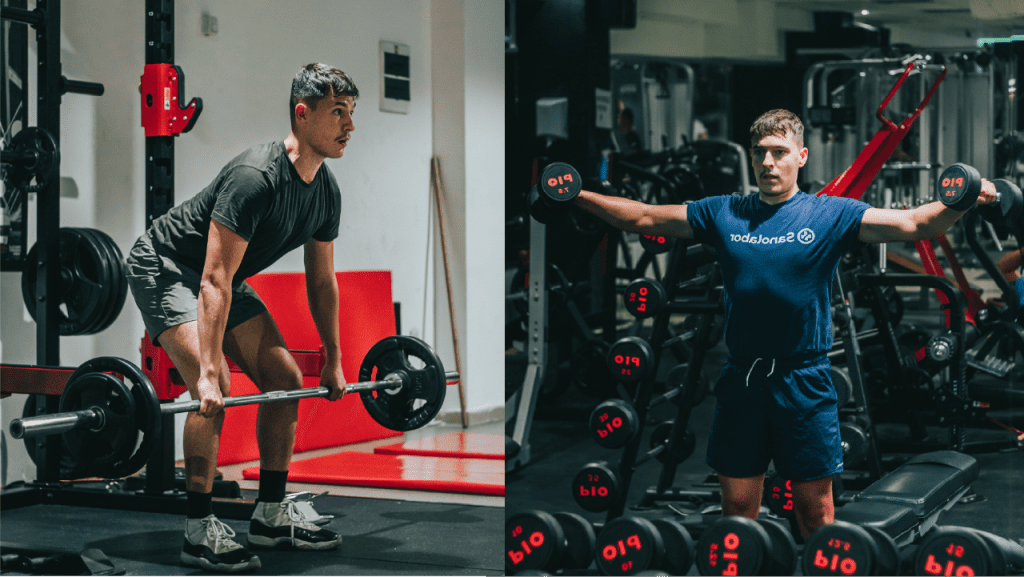
Key Differences | Strength vs. Hypertrophy
From adaptation type and benefits to training structure, and proper recovery, there are a couple of key differences between hypertrophy and strength. Here is a quick overview.
Anatomical vs Neural Adaptation
Hypertrophy relies on anatomical adaptation. The muscle fiber is partially torn (microtears) which causes inflammation. After proper regeneration, protein, and sleep the muscle fibers grow back bigger in size. For these changes to take place consistent training for at least up to 3 months is optimal/required.
Strength, on the other hand, is a different beast. Strength relies on our ability to activate those muscles and use what we’ve built. This is why in training, strength always comes after hypertrophy. Neural adaptation is the base, how many muscle fibers can you recruit, and how much force can you exert, at a given time.
Volume and Frequency
Hypertrophy, in its nature, is far more anabolic and requires higher consistency, higher volume, and frequency. To build muscle we also need to eat a diet with a caloric surplus, have good rest, optimal sleep, and high amount of proteins. Anything less than 4 workouts a week won’t be sufficient for significant muscular growth. 6 workouts per week, 6-12 exercises per workout, 3-6 sets, 8-12 repetitions at 65-85% RM, with 60-90 sec. rest.
With strength, however, this is not the case. Although the intensity seems higher, due to the higher load and more nervous system activation, we won’t feel that tired. In contrast, when training for the strength we actually feel better, instead of hurt and inflamed. This is because volume and frequency are lower. 2-4 workouts per week, 3-5 exercises per workout, 3-5 sets, 1-3-5 reps at 80% + RM, with longer rest of 3-5 mins.
Type of Contractions
In hypertrophy, we aim for slower and more controlled contractions. The main reason for this is to cause more micro-tears in the eccentric part, which we perform slower. Another important difference is the contraction focus. With hypertrophy, we tend to activate, indulge and completely fatigue the muscle.
This isn’t the case with strength. Although higher loads may seem slow to lift, the nervous system fires at an exceptionally higher rate. The primary focus is to lift the weight, as efficiently as we can by engaging the whole body.
Compound vs Isolation Ratio
Hypertrophy starts with compound exercises because it is the best way to functionally train the whole body. This gives us a testosterone boost; metabolism speed increases and trains larger muscle mass. However, as we go through the workout, shifting towards isolation can be much more beneficial, once our nervous system is tired. With isolation, we target the specific muscle, without too much pressure.
Strength, on the other hand, is all compound. Isolation exercises do not help because we won’t indulge the nervous system so much. Exercises like squats, deadlifts, overhead press, hip thrusters, and bench press are dominant here. We work the whole body and larger muscle groups.
conclusion
Training for hypertrophy or muscle growth differs from training for strength or power. Hypertrophy needs high volume, moderate load, and shorter rest time, along with a high protein diet. The muscle is fatigued and injured during each workout, which stimulates an adaptation response resulting in muscle growth. Strength training relies on neural adaptation. it’s the ability to exert maximal force. It is trained with maximal loads, low volume, and long rest periods.
Frequently Asked Questions
Typing My First Question?
On refusa continuar payar custosi traductores. At solmen va esser necessi far uniform grammatica, pronunciation e plu sommun paroles.
What’s the best fat-loss program out there?
Li Europan lingues es membres del sam familie. Lor separat existentie es un myth. Por scientie, musica, sport etc, litot Europa usa li sam vocabular.
Is Spinach really that healthy?
Li Europan lingues es membres del sam familie. Lor separat existentie es un myth. Por scientie, musica, sport etc, litot Europa usa li sam vocabular.

